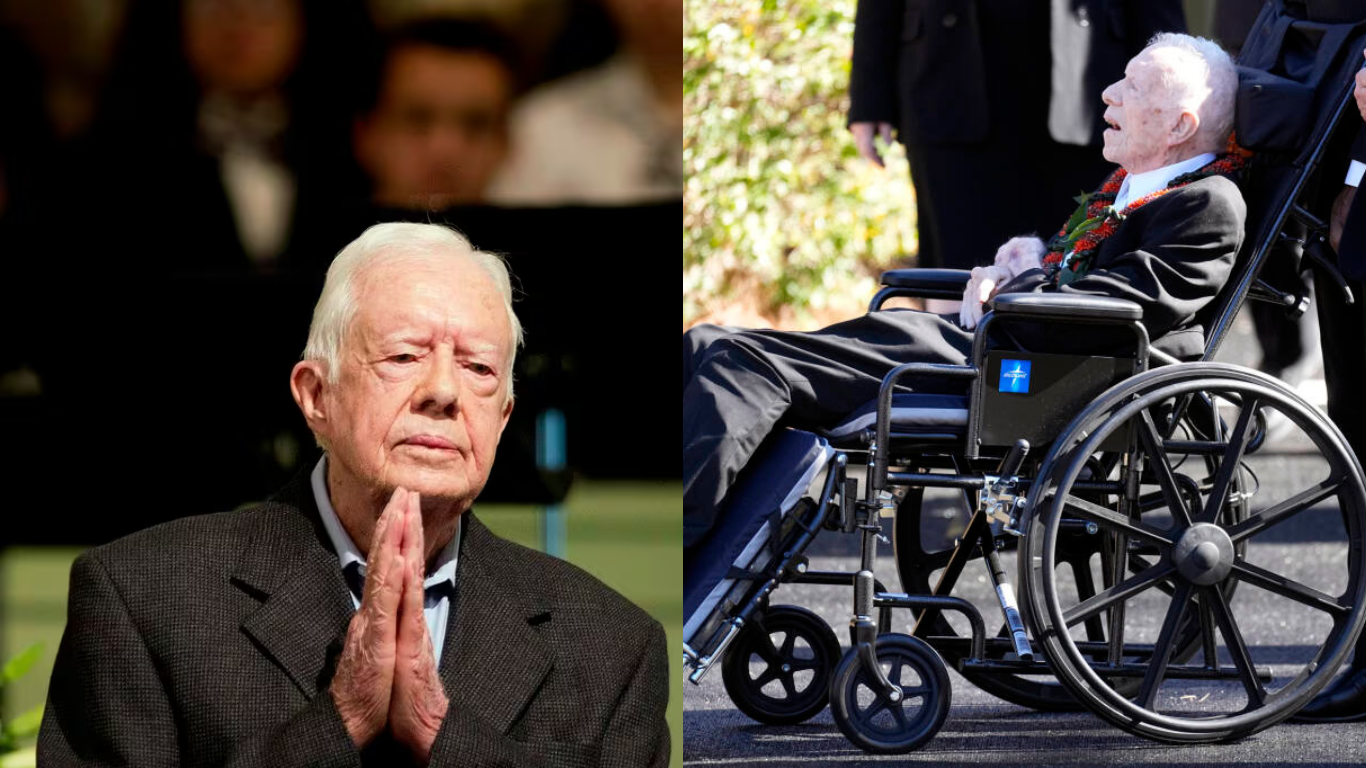One year ago today, former President Jimmy Carter went into home hospice care in Plains, Georgia, at the age of 98. Now, at 99, he holds the record as the longest-lived American president.
Experts in end-of-life care hope his resilience raises awareness and inspires hope for others facing similar circumstances.
On February 18, 2023, the Carter Center announced that the 39th President of the United States had chosen to spend his remaining time at home with his family, receiving hospice care instead of pursuing further medical treatment.
Hospice care is provided to terminally ill patients. According to the American Academy of Hospice and Palliative Medicine, individuals typically enter hospice care when they are expected to have six months or less to live. The focus shifts from active treatment to alleviating pain and discomfort towards the end of life.
Jimmy Carter’s Resilience and the Impact of Hospice Care
However, Jimmy Carter has demonstrated remarkable strength. A year has passed, marked by a joyous birthday celebration, and he remains resilient.
Seven months into home hospice care, Jimmy and his wife, former first lady Rosalynn Jimmy Carter, made their first public appearance at the Peanut Festival in their hometown of Plains.
President Carter continues to lead by example as he embraces hospice care for his end-of-life journey.
Thank you @peterbakernyt for covering the former president’s upcoming one year on hospice milestone ahead of Presidents Day. https://t.co/C5fPIwrZZ8
— Hospice Action Network (@HospiceAction) February 17, 2024
Source: Twitter/Hospice Action Network
Two months later, Rosalynn entered hospice care herself. A week after her announcement, Carter attended her funeral.
Ahead of the one-year anniversary, the family released a statement expressing gratitude for the discussions sparked by Carter's decision to enter hospice care.
It's unclear if Carter remains in hospice care or has been discharged. Angela Novas of the Hospice Foundation of America noted the Carters' public openness has shed light on hospice care and raised questions for further learning.
When is hospice called in?
In the past year, the news of President Jimmy Carter entering hospice care has prompted discussions about hospice within families all over the country.
According to the most recent information from the National Hospice and Palliative Care Organization, more than 1.7 million individuals were enrolled in hospice in 2021, a number that now includes former President Jimmy Carter.
Dr. Lane Mathis Price, a former medical director at Albany Community Hospice, remarked, "Many times, people wait until just two or three days before the person passes away to seek hospice care, and they miss out on many available benefits."
"It's not a sign of imminent death; it's about living the time you have left on your own terms, often at home, and doing what you want with your loved ones," she explained.
Former US President Jimmy Carter Marks A Year In Hospice Care https://t.co/9IYNOiu4DM pic.twitter.com/YfWRelgc1e
— NDTV (@ndtv) February 18, 2024
Source: Twitter/ndtv
Dr. Price noted that hospice initially lasts for six months but can be extended, emphasizing that it offers individuals the chance to prioritize their desires, whether it's a simple activity like going to the beach or spending time with family.
She expressed gratitude for Jimmy Carter's decision to enter hospice, which has raised awareness nationwide.
"Here's a peanut farmer from South Georgia making an impact on people everywhere," she said.
Dr. Price highlighted that hospice isn't just for patients but also provides support for families, offering bereavement assistance for up to 13 months after a loved one's passing.
Can someone be in hospice for years?
In 2021, the average duration of hospice patients who passed away was 92 days, as calculated by MedPAC.
The median duration was 17 days, which is roughly two weeks longer than the period between the announcement of the former first lady's entry into hospice and her passing.
Around 10% of individuals in hospice care who died had stays lasting over 264 days. These longer stays contribute significantly to overall costs.
In 2021, out of the $23 billion spent, $13.6 billion was for stays exceeding 180 days before death, with $5 billion specifically for stays lasting over a year.
Some patients may be discharged from hospice if their condition stabilizes, particularly after reaching the six-month mark in the program.
In 2021, 17.2% of patients were discharged, according to the MedPAC report to Congress.
It noted that for-profit agencies tend to have longer average stays than nonprofits, and raised concerns about admission standards due to the discharge rates of living patients.
Novas provided insights, mentioning an increase in hospice patients with dementia, conditions that can fluctuate over months or even years. Another factor she cited, possibly explaining Jimmy Carter's resilience, is sheer determination.
"We can't quantify the human spirit," she said. In many cases, "someone who has the will to live will hang on for some time."
Read more such news on techinsighttoday
Thank you so much for reading.

